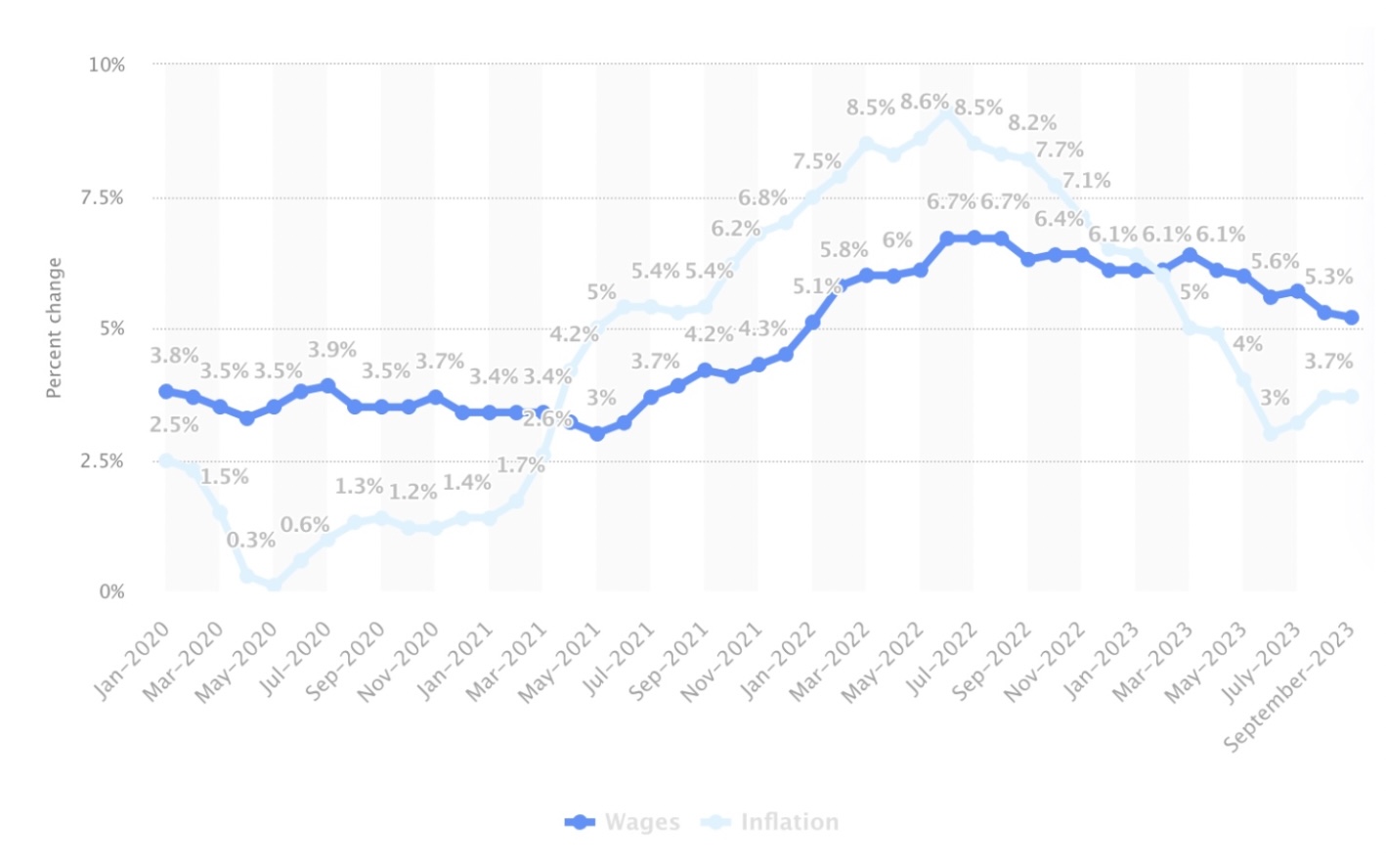History tells us we’re in for a strong bull market with a hard landing
Consumer debt is at a record high, a fact that will weigh on the market in 2024. Yet, it’s safe to say central banks will keep rewriting the rules to keep the economy at full steam.

Opinion
While the United States Federal Reserve decided to hold interest rates at its November meeting, they remain at their highest level since well before the global financial crisis (GFC) of 2008-09. The Federal Funds rate stands at 5.25-5.5%, similar to the United Kingdom’s 5.25%, while in the European Union it is at a record high of 4%.
This is being driven by high inflation, which remains sticky throughout the developed Western world. It is so sticky that some, including Citadel’s Ken Griffin, are predicting it will hang around for a decade or more. As such, central banks are now musing on higher rates that may last longer.
This is a significant departure from what has become the norm over the past 15 years: ultra-low interest rates facilitated by never-ending cycles of borrowing at the government, corporate and individual levels. This constant flow of money led to a strong, uniform rally following the GFC, and kept equity markets on life support during the worst global health crisis in over 100 years.
Related: With Bitcoin’s halving months away, it may be time to go risk-on
Understandably, then, investors are nervous about what an end to this regime could look like, and they are right to be so. If history has taught us anything, it’s that capitalism is a boom-and-bust game. And right now, we are at the beginning of a fresh cycle.
While most of us look straight to 2008 to understand our current situation, it’s helpful to look back a bit further. Between 1993 and 1995, U.S. interest rates rose rapidly as a flash crash in 1989, high inflation, and tensions in the Middle East put pressure on the world’s largest economy. In response, the Federal Reserve raised rates from 3% in 1993 to 6% by 1995.
Far from hurting the U.S. or its Western trading partners, though, that rise witnessed the start of an incredible period of growth. Between 1995 and 1999, the S&P 500 more than tripled in value, while the NASDAQ composite index rose a staggering 800%.
This was a period of globalization, innovation, and optimism that led to the creation of what has become the backbone of not just the global economy, but the life of every human being on the planet: the Internet. This didn’t last, though, and by October 2002, the dot.com bubble had burst and the NASDAQ had given up all of its gains.
Related: Bitcoin beyond 35K for Christmas? Thank Jerome Powell if it happens
Today, we also find ourselves emerging from a brutal period of high inflation and high interest rates, against a backdrop of rising tensions in Europe and the Middle East. Similarly, though, the economy is doing remarkably well, despite everything it has faced since the Covid-19 pandemic.
We can also draw parallels between the dot-com boom and crypto. January will almost certainly spell one or more U.S. Bitcoin spot ETF approvals, which will drive huge waves of institutional money into this relatively new asset class. This could potentially spur a wave of IPO activity inside and outside the industry that, as it did in 1999, could eventually go bang.
While we can draw some comparisons with the 1990s, there is one overriding factor that puts us closer to the market cycle of 2001-07: debt. As we all know — thanks to Margot Robbie explaining it to us in a bubble bath — 2001-07 saw one of the most reckless periods of lending, and then trading on that lending, ever known. And the result was world changing.
Today, we see frightening hints of 2008 as U.S. household debt stands at a record high, and delinquency rates on credit card loans are rising at the fastest rate since 1991. Instead of tightening their belts, U.S. consumers chose so-called “revenge spending” after being locked in their houses for nearly two years, and it is taking a toll.
The reversal of this credit trend may not bring down the global banking system the way it did in 2008; but it is important for the health of the U.S. economy, which is currently being driven by the U.S. consumer. And the longer interest rates stay high, the more pressure is going to build as those debts pile up.
The consumer has borrowed more than they can afford
Default rate on credit card loans from small lenders has seen a sharp spike to 7.51%
This level is highest level EVER seen
Even higher than the Dot Com bubble and Financial Crisis
With credit card interest rates still over… pic.twitter.com/dSX9cXicYE
— Game of Trades (@GameofTrades_) November 11, 2023
And of course, to address the 10-ton elephant in the room, it’s not just the U.S. consumer racking up debt. Thanks to the pandemic, the U.S. government is now more than $30 trillion down. This is a previously unimaginable situation that has led to credit downgrades for the world’s largest economy that everybody has, so far, brushed off as no big deal.
We are not, though, at a 2008 “credit crunch” inflection point just yet. Despite activity in the bond market suggesting otherwise, the U.S. economy remains resilient — and the U.S. consumer particularly. Higher interest rates haven’t put people off buying property, and nobody seems interested in cutting back on spending as wages are still rising faster than inflation.

We also see some optimism in markets, especially the cryptocurrency market, which has already kicked off its next bull cycle as investors exorcize the ghosts of Terraform Labs, Three Arrows Capital, Celsius and FTX by piling into altcoins.
The odds, then, favor an extremely strong bull market over the next year or two until the steam runs out, as it always does. Eventually, the U.S. consumers’ enormous debt pile is going to topple, especially if interest rates remain higher for longer.
The most important players in this cycle will be the U.S. Treasury and Federal Reserve. As we saw in March 2023, they are willing to rewrite the rules to ensure the survival of the banking system. As things wobble, goalposts will likely be moved. What goes up must come down, though. Of that, we can be sure.
This article is for general information purposes and is not intended to be and should not be taken as legal or investment advice. The views, thoughts and opinions expressed here are the author’s alone and do not necessarily reflect or represent the views and opinions of Cointelegraph.
Add reaction











Leave A Comment